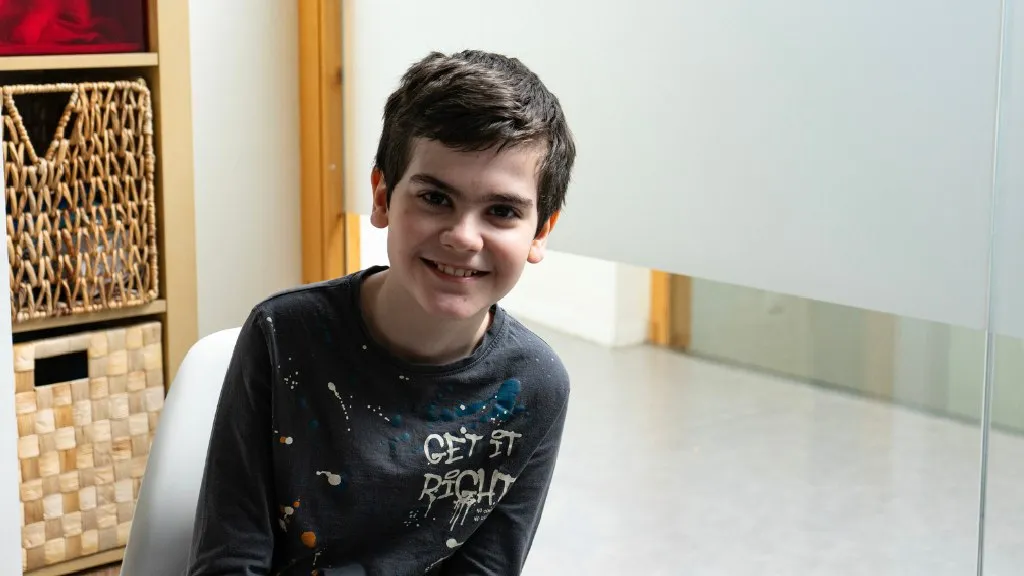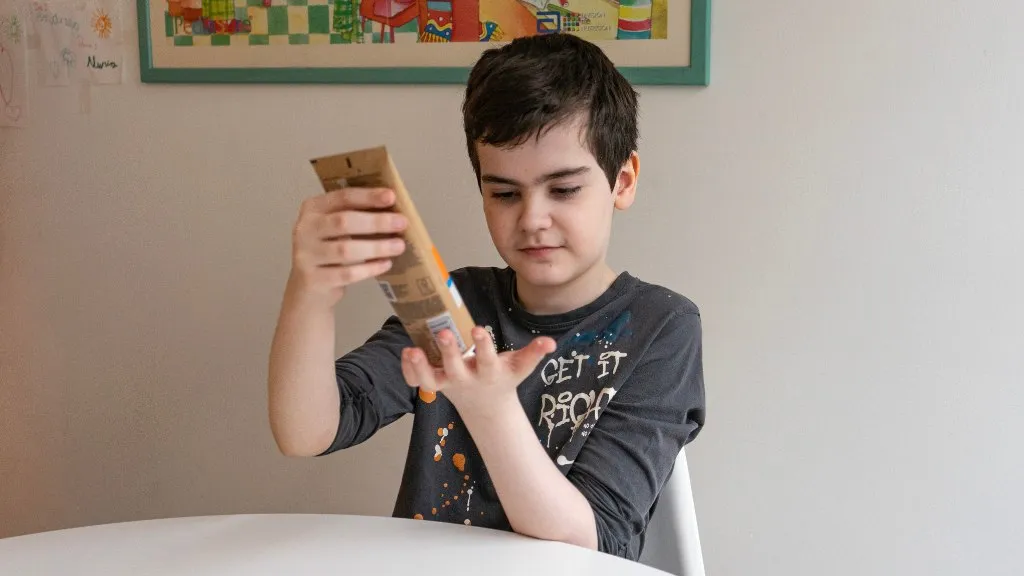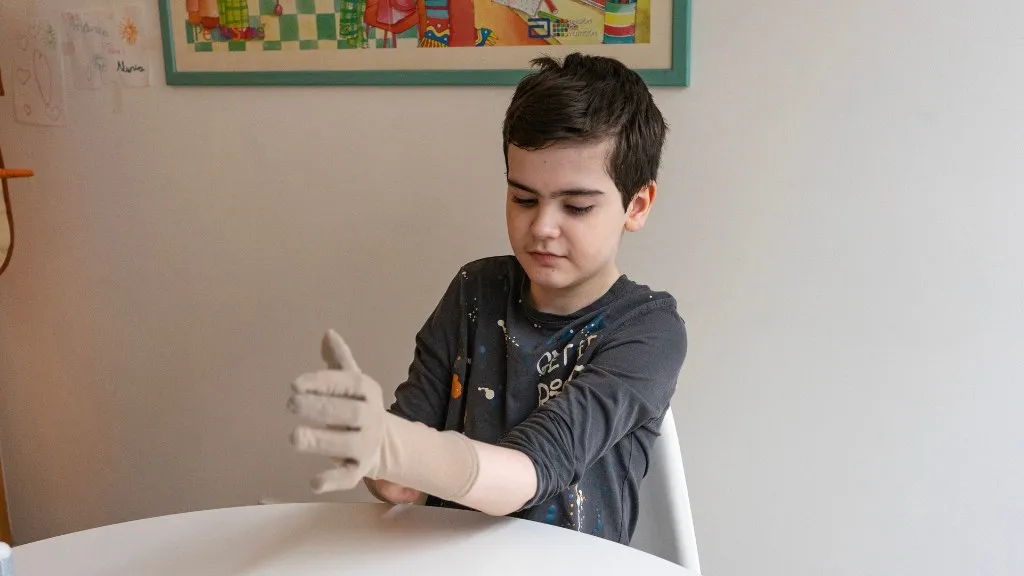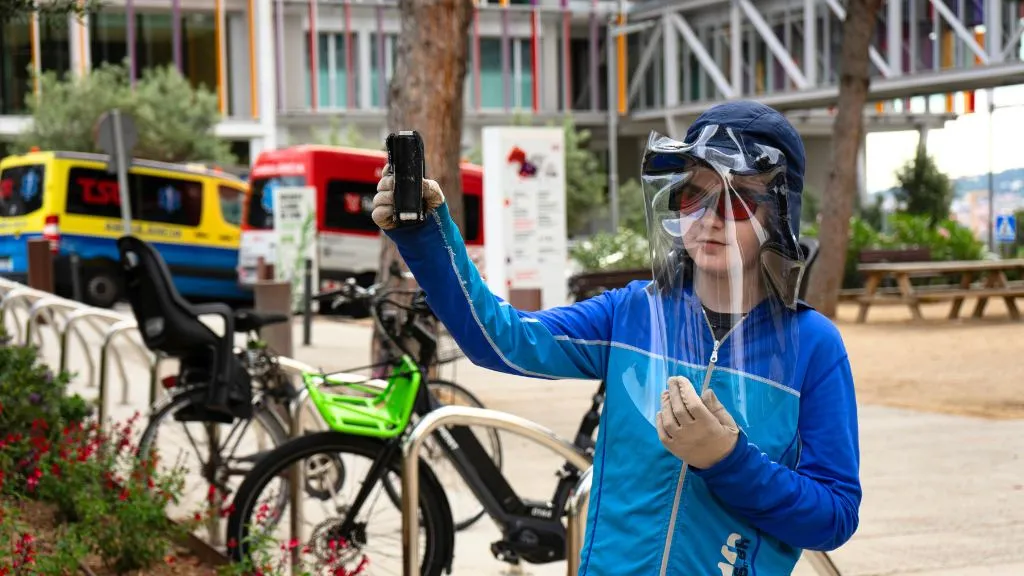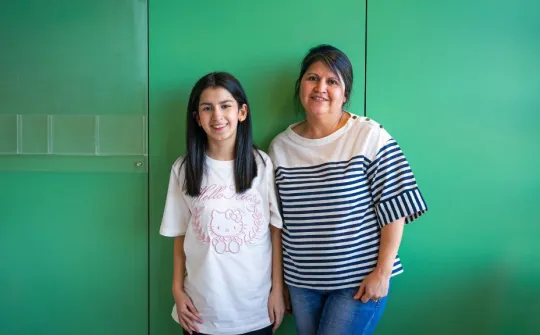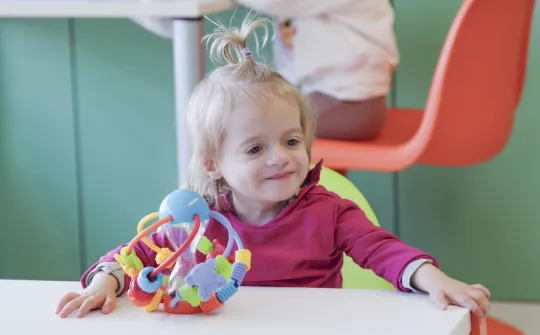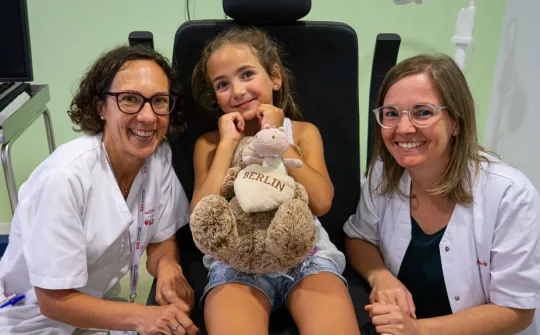‘I could never have imagined that there would be a disease like xeroderma pigmentosum. It’s like something from science fiction’

Pol has an extreme sensitivity to ultraviolet rays that forces him to protect himself from the sun.
Summer is the season of beaches, days out and bustling, busy streets. But for Pol, it is quite the opposite. This 11-year-old boy spends each summer in a beach-side town, but a good part of the day is spent indoors. He only goes out when the sun has gone down. Then he can have a cold drink with his parents or swim in the sea at the beach.
Pol has xeroderma pigmentosum, a rare disease caused by a functional abnormality in the body's DNA repair system that causes extreme sensitivity to ultraviolet rays. If he is exposed to the sun, he gets severe sunburn and has a much higher risk of developing skin cancer. Since these children have to avoid any kind of UV light, they are also known as ‘children of the night’ or ‘moon children’.
Whether winter or summer, Pol can only go outside if he protects himself: he must apply sun cream to every inch of his skin every two or three hours; he must wear gloves that cover his hands, plus long trousers and a dark, thick, long-sleeved t-shirt; and he also wears sunglasses and a broad-brimmed hat to cover his head and neck that also has a transparent plastic covering with UV protection to protect his face.
In his backpack, he carries a UV ray measuring device to analyse how much UV radiation is in the room or space he wants to go into, so he can decide whether it is safe to take off his UV protection or if he has to keep it on. He does not enjoy going out in summer, and not just because of the sun, but because he has to wear so much clothing that he overheats easily, making him extremely uncomfortable.
His mother, Xènia, explains that the first symptom of the disease appeared when the boy was just two months old. ‘At first, we thought it was eczema caused by some kind of allergy. Then, the day after having been outside in the sun, he came out in a sunburn on his legs, and we put two and two together. But at no point did we think it was something severe. We went on holiday, paying particular attention to applying suncream and not spending too long in the sun. When we came home, we took him to a dermatologist. After doing a few tests, she then contacted Dr Asunción Vicente, a dermatologist at the SJD Barcelona Children's Hospital.’
There are eight different types of xeroderma pigmentosum, all with different clinical symptoms and levels of severity.
A DNA screening confirmed that Pol had xeroderma pigmentosum group D. This group (of which there are eight different types, with different clinical symptoms and levels of severity) makes up only 15% of affected patients. Because of their increased sensitivity to UV radiation, these patients can develop several types of skin cancer at a very early age, as well as suffer neurological problems, such as sensorineural hearing loss, ataxia and mental delay. Fortunately, that is not the case for Pol.
‘I could never have imagined that there would be a disease like xeroderma pigmentosum. It’s like something from science fiction,’ confesses Xènia. ‘Right now there is no treatment. Sun cream is the only option,’ she adds.
According to data from the Asociación Xeroderma Pigmentosum, there are an estimated 100 people with this rare disease in Spain. It is calculated that around 20 of them live in Catalonia, and at the SJD Barcelona Children's Hospital, we monitor around 10 children.
Adapting the surroundings
Pol's family have had to adapt their home to help protect him: changing lightbulbs for LED lights, and installing anti-UV polyester films to all of the windows, as well as to the car. ‘They have also made accommodations at school so Pol doesn't need to wear his UV protection in class. But any time they go out or on a trip, they have to plan everything in advance. The teachers tell us where they'll be going, what they'll be doing and we check whether Pol will be able to attend: whether he would be too exposed, whether he'd be fine to go, we have to check beforehand because some activities are outside and have a higher exposure risk,’ shares Xènia.
The limitations go beyond just this, however. Unlike other children, Pol cannot attend summer camp because these events involve lots of outside activities. ‘When you have a child with any kind of disease, your main concern is finding solutions to their problems and making sure their needs are met. While before we might have considered going to the mountains, now we know we can't, and we think of something different. The most important thing is that he is okay,’ stresses Xènia.
